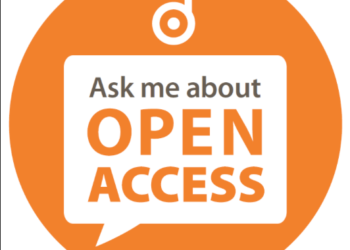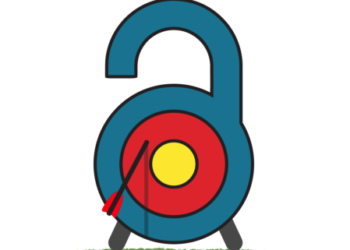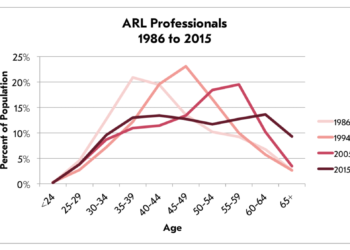Open Access (OA) publishing is continuing to grow. Based on our most recent research and analysis, Delta Think estimates the OA market at approximately $470M in 2016, up from $390M in 2015. It is also no secret that OA volume as a percentage of total market volume (estimated at 20-22%) is much higher than OA revenue as a percentage of total market revenue (4-9%).
But what does this all mean? For publishers, those could be scary numbers, analogous to the revenue declines seen when print advertising decreased as online advertising increased, but at much lower revenue levels. For OA advocates, is this shift producing the accessibility and openness they had hoped for? For libraries, is OA reducing their cost while increasing access? Where do preprints fit in? What about the entire research process, versus article publishing only?
In anticipation of Open Access Week, we asked the Chefs: Where does Open Access go from here?

Joe Esposito: This is a difficult question to answer, in part because to answer it, one would have to be able to say where open access is today. I can’t do that and I don’t know anyone who can. It’s a pluralistic OA environment — a good thing, in my view — but nonetheless hard to characterize. Add to this the gray line (from a publisher’s point of view) between OA venues and pirate sites. The line is gray because authorized OA and piracy have the same impact on the sale of toll-access publications. The legal status, in other words, is irrelevant.
There are whispers in the library world about an emerging movement to get libraries to dedicate a certain percentage of their budgets to OA projects. My understanding (with my ear to the door) is that the figure is in the range of 2%-5%. That’s a lot of dough, and if this movement comes to pass, it would provide a lot of money for investment. Whether that money would be invested wisely is another matter. It won’t be invested efficiently, as a matter of course, but wisdom is a different matter.
So my answer to the question is that there will be greater coordinated effort by OA advocates and their institutions to fund and build OA infrastructure. This will keep people busy for a few years.
Alice Meadows: Open access continues to be a topic of much (often heated) discussion – though arguably not quite as much or even as heated as it was a few years ago. But much more interestingly, and importantly, it is no longer seen as the be-all and end-all goal. Rather it’s just one element in the much bigger movement toward open research (or open science, as it’s often called), which aims to make all aspects of the scholarly process open, not just publications.
There’s a lot to like about the notion of open research. In many cases it reflects how researchers actually work — or aspire to work (at least in academia), with an emphasis on pre- and post-publication sharing of data and ideas, and on transparency of process including governance and ownership issues. This makes open research a more powerful movement — something that scholars across all disciplines, and their organizations, can embrace and adapt to work for their community. Take transparency in peer review, for example, the topic of this year’s Peer Review Week. While not all researchers and/or disciplines are ready to adopt fully open peer review, there’s no reason why they shouldn’t all commit to more transparency in the peer review process. Similarly, many (most?) researchers already share data and results with other scholars, albeit often in a rather ad hoc and insecure way, using spreadsheets and emails rather than repositories. Both these examples of how open research is already being imperfectly practiced represent opportunities for publishers and others to provide better (user friendly, scalable, affordably priced, accessible to all) solutions.
So my hope is that what’s next for open access is actually what’s next for open research, and that the answer is both more investment in tools that make practicing open research easy and systematic, and an ever-increasing community of individuals and organizations (of every stripe) who are committed to making it a reality in ways that are appropriate to their discipline(s).
Lettie Conrad: Where we go from here with open access publishing depends, I think, on how well we attend to the real-world demands and experiences of those on the front-lines of creating and consuming research: Chiefly, these are our authors, as well as readers, instructors, editors, reviewers, and those who wear one or more of these hats. Are OA models designed to sustain status-quo commercial needs or truly offer an innovative approach to publishing the work of our authors?
As Toby Green recently points out in Learned Publishing, most green and gold OA workflows require changes to standard practice for every stakeholder along the chain, including publishers and librarians. While innovation often requires uncomfortable changes, many changes required to support OA models have lost sight of serving value to the information practices of today’s scholars. New metrics for open access should include an honest assessment of our performance against strategic goals in publishing innovations as well as how well we support those who produce the scientific knowledge we are entrusted to disseminate.
Rick Anderson: I guess I’d have to answer this question with another question: are you asking where I think OA is going to go from here, or where I think it should go from here? Either way, I think my answer is the same: I think OA both should and will continue going where it’s currently going, which is to say in multiple directions. The OA movement is diverse, and while that poses certain problems (especially around the definition of “open access,” which is still nowhere near universally agreed), it also creates opportunities and has the capacity to keep conversations open, which I think is generally a good thing. I doubt very much that in the future, we’re going to see a single universally-accepted definition of OA, or a single model of OA provision that is universally recognized as the Only True Way to Do OA. Nor do I anticipate that OA itself, however defined, will become universal. There are only two ways for that to happen: either everyone in the world will have to decide that it’s not okay to sell access to scholarly information (at which point there will no longer be a market for paid access), or it will have to become universally illegal to sell access to scholarly information. Until one (or both) of those things happens, there will always be scholarly information that is only available at a price.
So my prediction is a continued diversity of access models in the marketplace of scholarship, and while that diversity will present us with both upsides and downsides, on balance I think it will probably be a good thing.
Charlie Rapple: Answer 1: it forks. We recognize that there is no “one size fits all” solution in terms of green or gold or platinum or bronze. Some disciplines / regions / organizations can afford to pay APCs and recognize the benefit of making work openly available ASAP. Other disciplines’ / regions’ / organizations’ funding levels and models mean OA risks being a barrier to making work available at all. We might work our way back around, in due course, to the grand scale vision of everything being available for free. But in the meantime, we eat the elephant one bite at a time, and make OA a reality bit by bit. That’s basically already happening, of course. So I guess “what happens next” is that we continue along this trajectory, with OA pushing forward on those fronts where it is immediately workable, affordable, and a net gain. We stop expecting it to be a flawless silver bullet solution, and instead experiment and evaluate whether on balance it is increasing or reducing the reach and usefulness of research.
Answer 2: everything becomes openly available via SciHub and ResearchGate, open access becomes a moot point, and it is value-add services rather than content, which become the frontier for debate about business models. (Also already happening. My crystal ball is a bit shortsighted today).
Sian Harris: Much has happened with open access since the Budapest Open Access Initiative – standards initiatives, standard copyright terms, databases, national mandates, widespread acceptance from publishers, and many problems identified and solutions proposed. Dare I say it, we even seem to be seeing a bit more coming together of people who don’t quite see eye-to-eye on open access – although it’s possible the comment thread here may prove me wrong!
At the same time, it seems like some of the promise of open access has not yet been realized, as long-term OA advocate Leslie Chan identified in this interview. One of the big goals of open access was to increase access to scholarship from researchers in developing countries. We see from our AuthorAID network and our collaboration with UNESCO to provide grants to developing world librarians to help raise awareness of OA opportunities, that there are strong supporters of open access in the Global South (see this case study from Joshua Okonya, a sweet potato entomologist in Uganda, and this one about how training in OA materials is helping rural health workers in Tanzania).
But access is only one side of the coin. Researchers need both information access and the opportunity to publish. Our own (so-far-unpublished) research shows, in some cases, a lack of awareness of open access or of the different approaches to publishing. We have many discussions with researchers – for example, through discussion lists, mentoring and various training activities — to help build awareness of OA and other issues. We also see challenges around paying for APCs, lack of awareness of possible APC waivers and journals with dubious publishing practices.
Our hope for where OA goes next is that it will better enable researchers to both access the research of others and communicate their own research so that the global research equity initially hoped for can be realized more fully.
Karin Wulf: There is no subject that excites as much attention on the Kitchen, and I used to think the hype was overblown. Open access has done both a lot more and a lot less than it was envisioned to do, and an awful lot of that at cross purposes to the original intent. If open access was a way to make more scientific literature available to more people in response to perceptions about cost barriers (largely caused by high subscription prices from for-profit publishers), then the results are decidedly mixed. The relatively quick conversion of those same publishers to a business model that not only accommodated but perhaps even co-opted OA was perhaps predictable. Other responses to perceptions about barriers – some of them to do with cost, and some to do with smooth online access and delivery — such as SciHub, were perhaps also predictable. I don’t want to write about where open access goes from here because I think the question is now into the weeds of mopping up unintended consequences (including the time spent administering the profusion of Green OA models, for example). I think the more interesting question is not where OA could or should go, but how OA can be better.
At its heart OA is a value proposition. More people should have more access to scholarship. That gets translated in a variety of ways, and it’s mostly about science. Funder requirements may cite citizen interests, university requirements for their researchers may have to do with their own vested interest in the research product. But the basic notion, more should have more access is hard to argue with, and I don’t know anyone who would. But like any value proposition, this one must compete against others. One that concerns me a lot is the value of scholarly production. Open access arguments sometimes seem like health care arguments in the US; there are a lot of promises to deliver as good or better product for more people at a lower cost, funding sources to be determined. In the area that most concerns me, and which has been brought along on the OA ride but now has some important contributions to make, there are some great experiments in funding collaborations, and in production co-ops.
But what remains elusive, while heterodox opinions and heterodox practices abound, is a better articulation of this thousand flowers approach as itself having an inherent value. Scholarship is not one thing. It differs not only by discipline and field, but also by intended audience (generalists, specialists, and yes, the engaged public). Some is synthetic work, while some is focused on a single new insight. To say that all should be available for all is to deny that there is value in a varied approach. We would never argue that all research should be formulated or carried out the same way, why should all OA look the same? Why would we want it to? Green isn’t fallen Gold, and there ought to be more not less variation that is appreciated as such.
Alison Mudditt: I think that we’ve reached something of an inflection point for OA. On the one hand, gold OA has flourished, opening access to significant portions of the literature and creating a highly successful business model for many publishers. And therein lies the problem:
- The APC model demonstrated that OA can be a viable business, but that realization has enabled commercial publishers to appropriate a movement (and much of the associated revenue) that was started to fundamentally change the power structures in research communication.
- In turn, the growing market and funding for APCs has facilitated the rise of predatory journals, thereby delegitimizing the OA enterprise more widely.
- While the goal of creating a more equitable system has been partially reached by opening access to the literature, it has not solved (and may even have worsened) the problem of participation, especially for the Global South.
Does this mean that OA has failed or that it cannot succeed? Absolutely not, but it does need to adapt to new realities. I see APCs as part of a (long) transitional period along with concepts based on old print models, including the journal itself. Alongside those, fueled by concerns about integrity and reproducibility, we will see OA expand into an open science framework with a full range of open, reusable research outputs (data, code, protocols, etc.), clear contributor recognition and early sharing of work.
The dramatic growth of preprints finally enables new models that make a more significant break with the traditional journal, and that move us beyond the current gold model. Looking further out, one can imagine a world in which preprints (along with access to the full range of research outputs) become the way research is communicated with different layers of review, commentary, curation and other value-added services layered on. In essence, OA needs to catch up to the subset of scientists leading this open, collaborative movement and work to expand it across disciplines, geography and business models. Above all, the OA community (PLOS included) needs to be able to better articulate how this vision better serves science in order to win hearts and minds again.
Judy Luther: It’s not a clear path and the view varies depending on where you stand. While the technology is providing more options to streamline publishing and reduce costs, we are restrained by academic traditions and economic realities that would have to be transformed for OA to become the norm.
Funders are now part of the equation with the Gates Foundation creating their own system, Chronos, and the Chan Zuckerberg Initiative funding bioRxiv, a preprint server. In addition, other major funders such as NIH are accepting preprints for grant applications and reports. There are a host of preprint servers emerging in different disciplines, and many are part of either SSRN, owned by Elsevier, or the Open Science Framework, created by the Center for Open Science and funded by non-profits.
Although large society and commercial publishers have incorporated open access, most still rely on subscription revenue. Smaller societies, especially those in the arts/humanities and social sciences, are confronted by the cost of adapting, and even if the costs were reduced, they could not lose a revenue stream that funds part of their operations. Societies have served as the natural communities of scholars and are part of the fabric of the academy.
The costs for the largest academic research institutions to publish their entire output as open access is untenable based on the current costs of publishing. The system must be streamlined and there are numerous experiments with peer review and new open source platforms emerging that offer new options.
Researchers are split with a portion that value open access, and the majority that are concerned that their content is published in a journal that is accepted by their department in support of their career objectives based on the tenure and promotion requirements of their institution.
___________________________________
At this year’s ALPSP Annual Meeting, Hetan Shah, Executive Director of the Royal Statistical Society, started his presentation by saying “Learned Societies do not have a right to exist.” He was not talking about open access, but his point is something we would all do well to remember – none of us, none of our commercial or not for profit entities have a right to exist. There are no laurels to rest upon.
We work in a complex environment and changes don’t happen over night, but they do happen over time.
So what are your thoughts? Where do you think Open Access will go from here?
Discussion
8 Thoughts on "Ask The Chefs: Where Does Open Access Go From Here?"
So many smart answers. I think that a lot of people are going to make a lot of money off OA. The “traditional” publishers are already doing okay with it. And big OA only publishers like PLOS or Hindawi are making lots of money. Societies for which OA is an option seem to be offsetting subscription attrition with an OA journal or two. And it would seem that the most successful predatory publishers are taking in cash.
Now what I see are new tools around OA, making more people money. A publisher pays a third party to host OA data. A company crowd-funds OA fees and gets a nice commission. An aggregator wants the publisher to pay to index their OA content in a search engine. A library purchases tools that help them get OA journals into their catalog.
I’ve got nothing against any of these initiatives but it seems to me like the point was to make publishing cheaper and divert money spent on subscriptions back to the research community. I don’t think that is happening now and I don’t see any big change in the future.
In a way, the OA via APC model was a very academic response to a perceived problem. But, free markets being what they are means that businesses will find a way to make it profitable.
Just want to +1 Angela’s comment (and some of above) about the financial shifts around OA. This is the key reason why I think that the mandates have got to continue to embrace a diverse range of ways that “openness” and “accessibility” can be evaluated.
Way back when, a number of societies published journals using an APC model with a modest subscription cost. Those were the days of print. The arrival of the Internet changed how some of this literature is circulated to the point that many libraries stopped worrying when the print version arrived since most of the readers went straight to the digital with the print as “archival”.
The arrival of the pub/perish demands where many authors were/are evaluated based on formulaic methods has been a boon to publishers whether the traditionals or the emergent. On the other hand, the rise, as mentioned above, of preprints and “free” sites increases access but potentially disrupts the traditional pub/perish controls, devolving to a caveat emptor problem in the literature (one increasingly problematic). It’s this symbiotic relationship around the “certification”, now tied to peer review that acts as a control and one that needs to be addressed as the world of research/publishing seeks a new equilibrium
The future of OA?
Why just follow the money.
Isn’t the most important question what the impact is for researchers? As long as Impact Factor publications dominate their careers, and OA does not change that, OA really isn’t that special. The APC model simply changes the point of payment, certainly if libraries pay them.
Unfortunately, much of the mystification and uncertainty surrounding Open Access Research can be directly attributed to the myriad newspeak “awareness” campaigns carried out by certain entities whom I imagine to be less than amused at the prospect of being rendered obsolete.
Nonetheless, the scholarly community has already crossed the proverbial Rubicon and through initiative and experimentation gained insight into the tremendous potential yielded by a peer-run international scholarly network free from unwarranted influences of third parties.
As such, it is only natural that one expects that liberating public funds from unnecessary and inefficient investments in restrictive proprietary services would remain a prime priority for the OA movement in the future, as its attainment would not only advance the cause of science but also discourage piratical proprietary practices through which publishers deprive even authors from entitlement to their own work.
I think the two most recent comments here, by Monique and J.S. provide really good examples of the widely differing goals that people have for open access. Monique suggests that the goal of OA should be to eliminate the Impact Factor and its pernicious influence on the career structure of researchers. J.S. writes that the point of OA is to upend the power structure of scholarly publishing and take funds away from third parties.
Rick Anderson wrote about this here:
https://scholarlykitchen.sspnet.org/2017/01/24/diversity-open-access-movement-part-2-differing-goals/
It’s more the other way around: from my research on disruption in the scholarly communication industry perhaps the most important conclusion is that the biggest issue preventing change is the researcher reward system. Hence I wonder if OA is such a change-maker. Although it removes the paywall issue for readers, it might simply shift the problem to a paywall issue for authors. Perhaps I was hoping that the OA movement would be more than a business model change.



